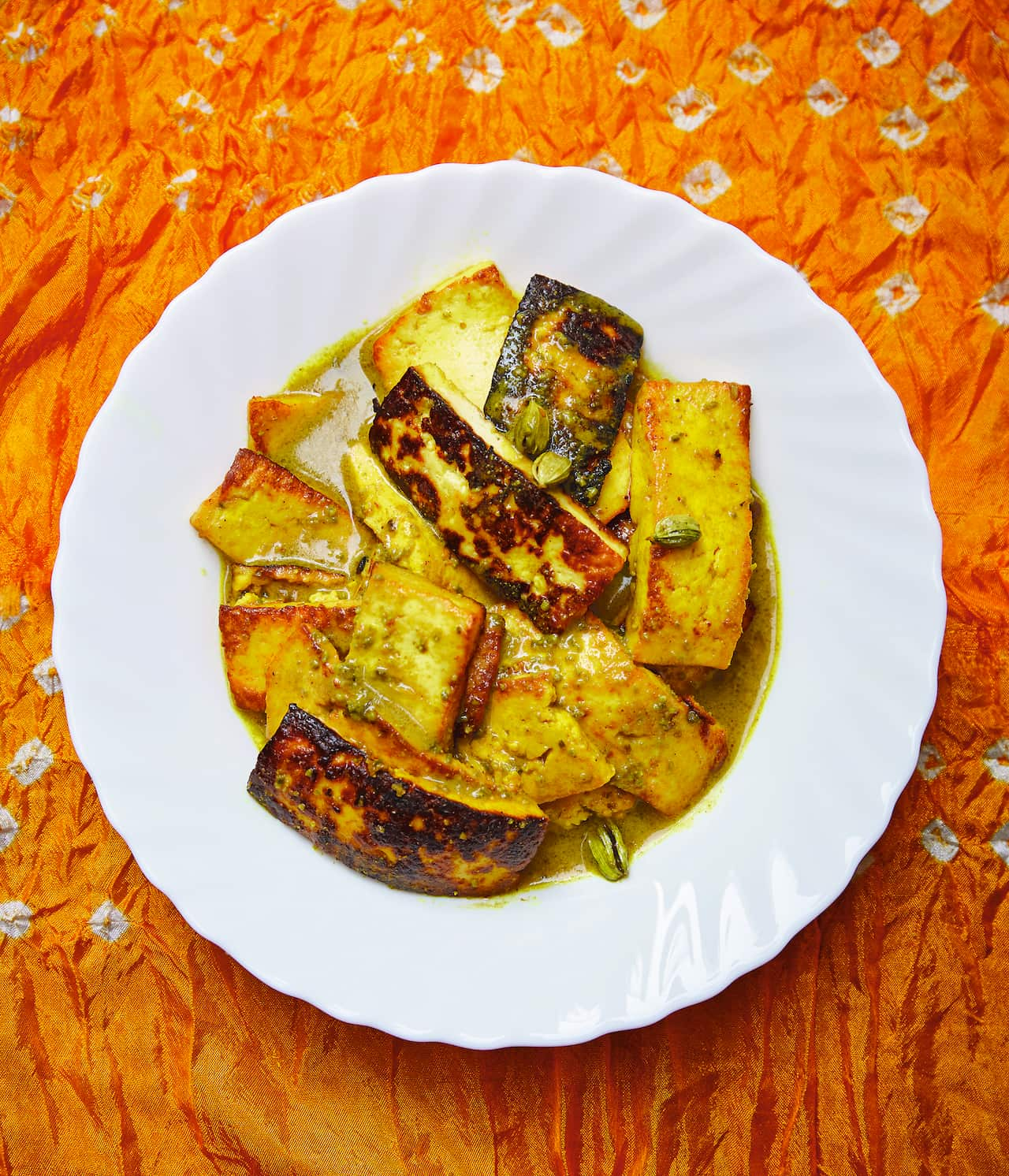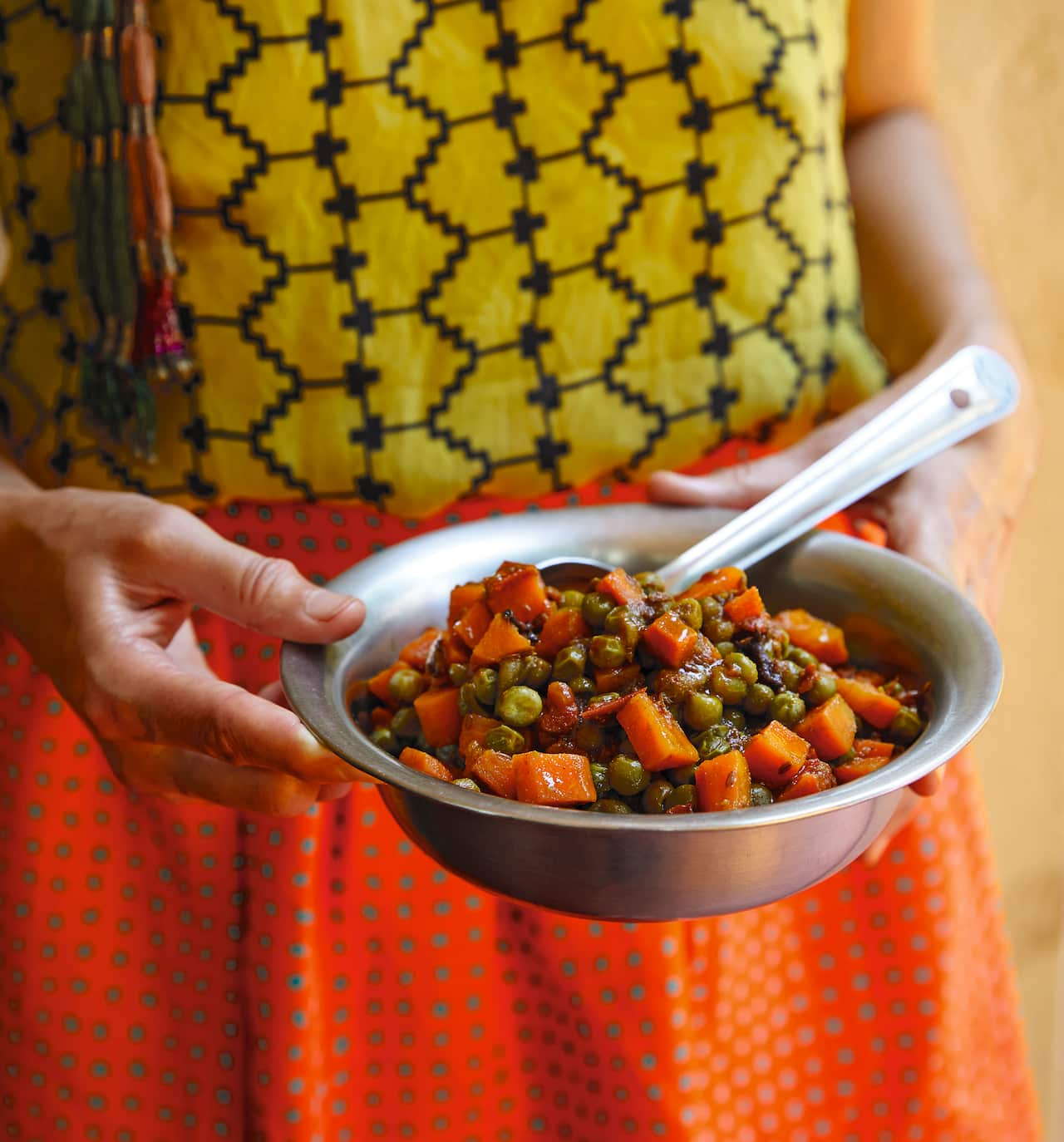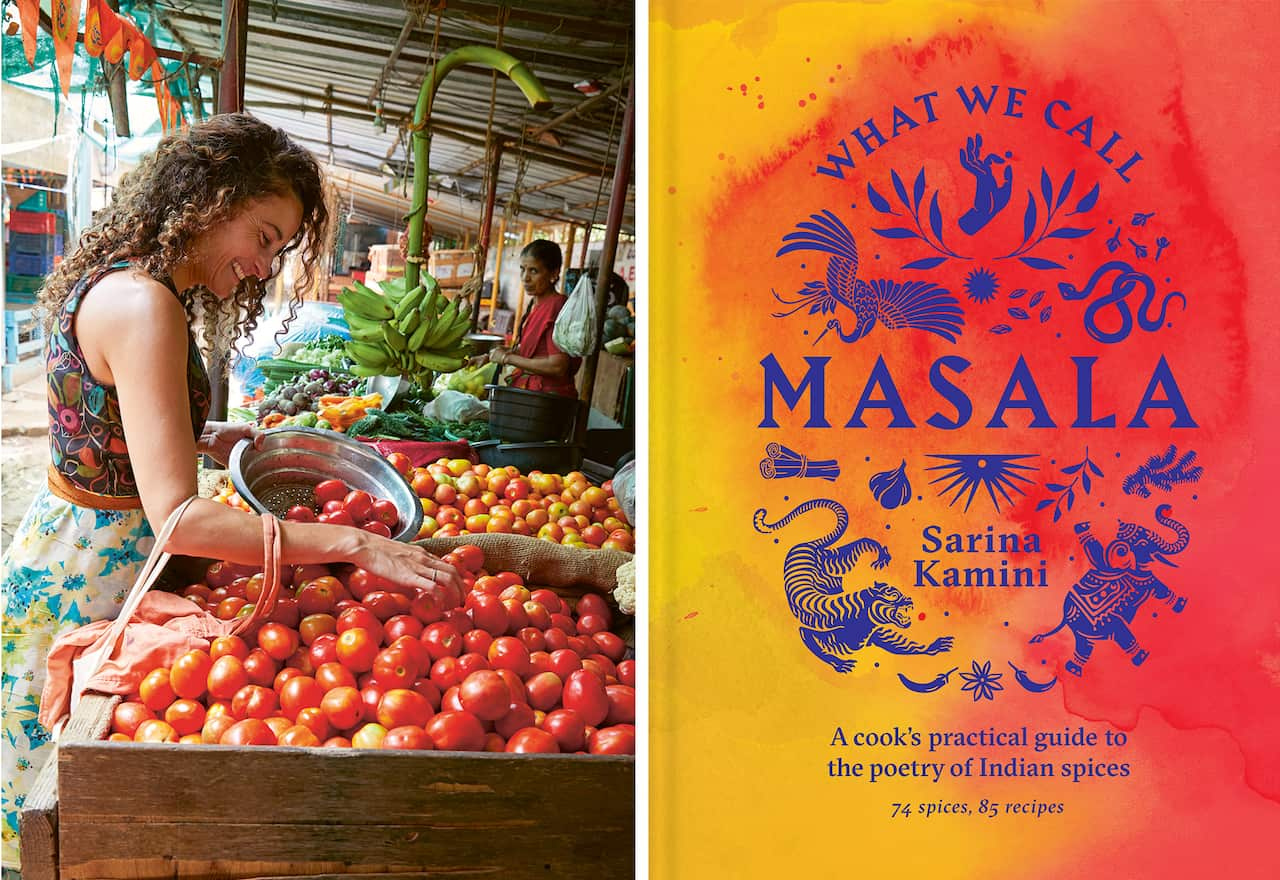In her new book What We Call Masala, Sarina Kamini takes readers on an welcoming and thoughtful journey into masala: not only a blend of spices, but also a layered reflection of culture and life. In this edited extract, she writes about warm spices, one of the 11 spice categories she teaches about in classes and writes about in the book, and shares some vibrant recipes.
Warm spices give masala depth, warmth and weight. They are also aromatically pretty.
I tell people new to masala that warm aromatics are those thought of as baking spices in Western kitchens: cinnamon powder, cassia powder, ginger powder, nutmeg powder and clove powder. Indian householders, however, use these aromatics in savoury contexts to tell the stories of our families. And with both my parents having passed away in the past four years, it makes it feel a little hard to talk about using these spices.
Indian householders ... use these aromatics in savoury contexts to tell the stories of our families.
At the most basic level, warm spices are all powders, and all are the ground and dried version of whole spices that largely belong in the structural spices category (one of the other ten spice categories I use). Aromatics in this category are pretty and front-palate-centric, and generally require anchoring by grittier back-palate spices in order to show their true length and clarity.
One of the common mistakes made by newcomers to regional Indian cooking is forgetting this category. Not because it’s not beautiful, but because it is. They tend to think that masala means shouldering into challenge and exoticism. But not allocating space in the pan for the aromatic signature of pleasure and comfort is problematic for a few reasons.
On a purely sensory level, it results in cacophonous masala: without the experience of pleasure offered by spices from this category, the aromatic angles and contrasts are too loud (see Why pleasure matters, below). On a storytelling level, a masala without the intimacy of meaning offered by warm aromatics becomes too broad to decipher. Or if a message can be deciphered, at the very least it’s less delicious for its impersonality.

Turmeric chaaman (paneer). Credit: Patricia Niven / Murdoch Books
But I also think that, culturally, Western kitchens undervalue the savoury aspects of these spices. When I’m teaching people about masala, they’re often surprised to find how wooded cinnamon powder is when they taste it raw. Or how dusty and sharp ginger powder is. Or the strong presence of salt and soil in aniseed powder. Calling these spices warm doesn’t just mean that they’re easy or friendly aromatics. It’s also about the shape they make in the mouth: the density of these powders and the beauty of the memories they evoke gives them a roundness of form that feels pleasurable to the sensory body.
This is because roundness as a shape signifies completion. You know when things come full circle? For that one moment in time everything feels good.
On a less emotive front, this category brings density and front-palate weight.
It doesn’t matter how much complexity and length you build into the back or base of a dish if the front palate is left sparse – imagine a fish out of water doing that thing with its mouth as it tries to ‘breathe’ in the air. That’s what masala feels like to the mouth without a full front palate.
How spice stows feeling
Our ability to function well relies upon our ability to digest our experiences. It’s a big ask – every day brings new things, old things, repetitive things, surprising things, things we don’t want to deal with. We have to sort through it all. One of the ways we do that and lessen the effort is to allocate certain bodily resources to certain tasks. And one of the ways we do this is by assigning emotional experiences to eating.
This natural process is too complex to explain here – you can read more on page 161. What I’ll say now is that the biological connections between taste, smell and memory mean that aromatics work as receptacles of emotion and memory – the experiences in our lives that make us, us.

Gajar matar sabji. Credit: Patricia Niven / Murdoch Books
When we decide to place ourselves emotionally in our kitchens, we give ourselves access to a daily form of awareness therapy. We give ourselves permission to notice how we’re behaving with our consumption, and to think about how that reflects our emotional state.
I know, for example, that during difficult times I drink more alcohol and eat less food. It happened after Dad’s death, and after Mum’s. But because I know this pattern, I don’t panic when it happens. I understand that all I’m doing is trying to make my insides fit what feels like the chaos of my outside.
Eventually I work through the crises and return to masala. I make dal makhani during recipe testing. I wake up to a kitchen that smells deliciously like a roadside dabba. I feed people. I stock my pantry. And I put myself back in my life again.
Why pleasure matters
Most Eastern cultural and faith traditions legitimise the importance of pleasure. From an Indian perspective, the most obvious example is that we have our own god of pleasure, Kama. Ayurveda views pleasure as an important component of wellbeing across the three body states. In all cases, ‘pleasure’ has a larger scope of meaning than is conveyed via contemporary usage.
The short story is that it’s deeper: pleasure in a traditional regional Indian sense means more the spark of new life or new ideas, and the refined artistry of creative pursuits. The longer story is that, within the context of masala and the sensory body, pleasure is a necessary point of relief from complexity and contrast.

Sarina Kamini and her new book. Credit: Patricia Niven / Murdoch Books
SARINA’S ELEVEN CATEGORIES OF SPICE:
- Salts
- Fats & other masala carriers (such as yoghurt, milk and water)
- Bitter spices (turmeric powder, fenugreek powder, fenugreek seeds)
- Earth spices (cumin, fennel, ajwain and nigella seeds, coriander and cumin powders)
- Warm spices (fennel, ginger, cinnamon, cassia and mace powders, plus second-tier warm spices including aniseed, cardamom, nutmeg and clove powders)
- Acidic spices (tamarind, amchur, sumac, plus second-tier acidic spices including lemons, limes and pomegranate molasses)
- Sweet spices (jaggery, saffron)
- Hot spices (chilli family and pepper family)
- Astringent-sulphurous spices (onion, garlic, bay leaves, mustard seeds, hing, fresh ginger, fresh turmeric)
- Forest-floor spices (methi, plus second-tier spices including curry leaves and coriander leaves)
- Structural spices (black cardamom pods, green cardamom pods, cinnamon sticks and cassia bark, plus second-tier structural spices cloves, star anise and mace flower)
*Second-tier spices include some that are used less often in Sarina’s Kashmiri kitchen, some that support rather than determine the tone of a dish, or those that have only an end-of-dish impact.
*Find detailed tasting notes, explanations of each spice’s use in masala and reflections on the emotive role they can play in the kitchen, along with recipes for using them, in What We Call Masala.
MORE FROM SARINA'S KITCHEN

Work out turmeric’s hidden magic with this simple Kashmiri chana dhal






